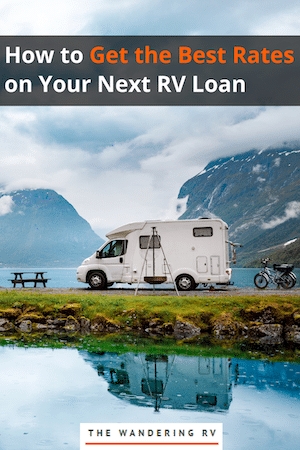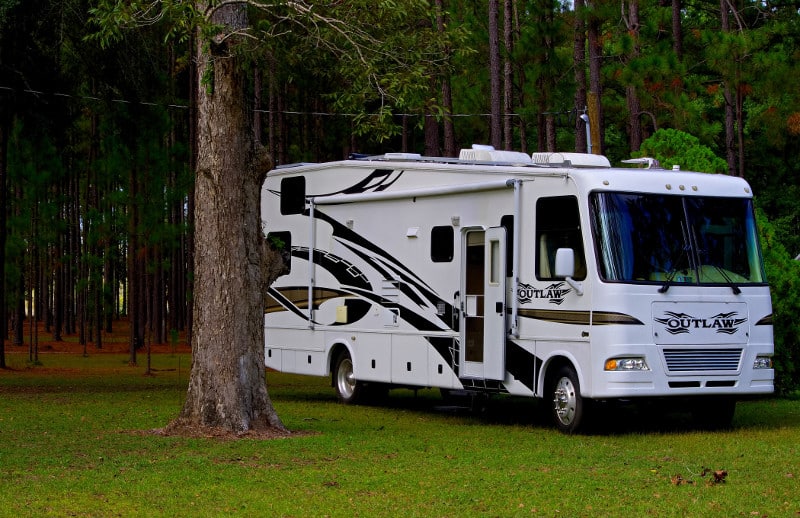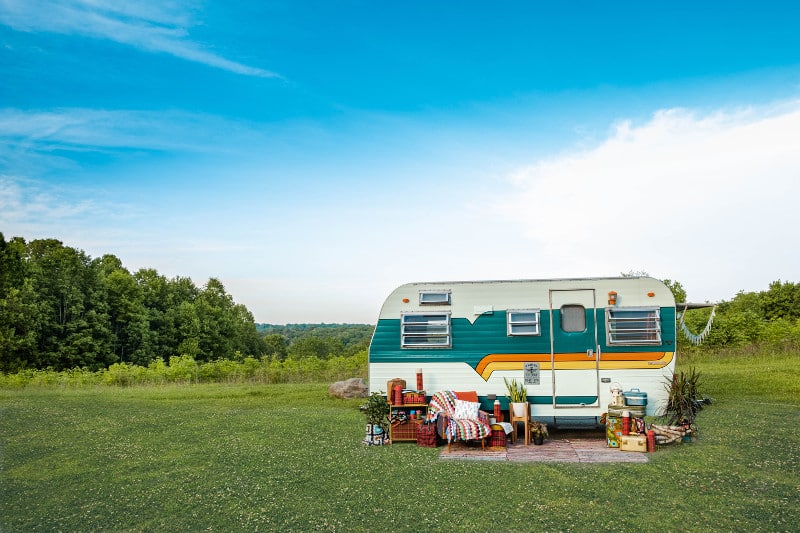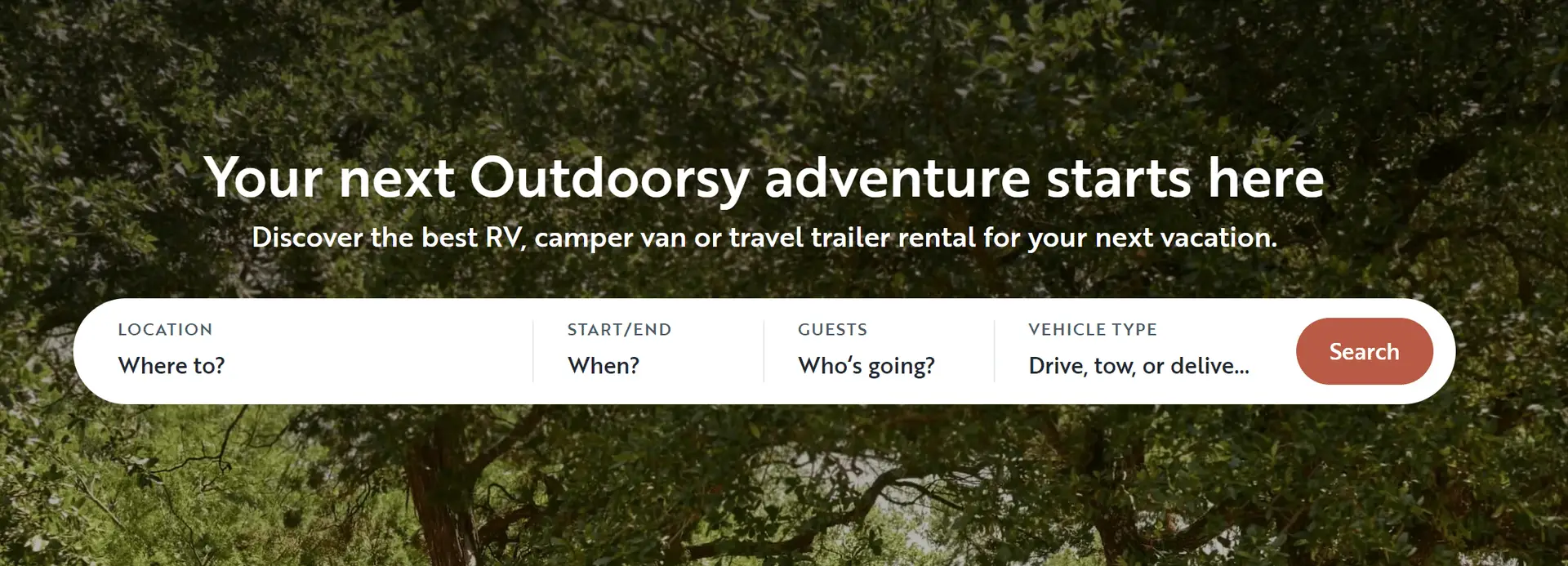The Wandering RV writes about products, strategies and tips to help you make smart decisions with your finances. We may receive a small commission from our partners, but our reporting and recommendations are always independent and objective.

There are several types of RVs, and prices vary depending on the specific make and model. An RV that has the comforts of home could cost anywhere from $60,000 to over $1 million, whereas a smaller travel trailer can go for much less. And extending beyond the initial price, there are other expenses to consider, such as maintenance, gas, insurance, etc. With this type of investment, it’s imperative to understand how RV loans work, as they help to finance such large purchases.
From the application process to securing the best rates, here’s everything you need to know about RV financing.
Table of Contents
- What is an RV Loan?
- How To Finance an RV in 6 Steps
- How To Qualify for RV Financing
- RV Insurance
- Frequently Asked Questions
Note: Some of the links in this article are affiliate links. This doesn’t cost you any more than normal. Read our disclaimer for more info.
What is an RV Loan?

RV loans are long-term financing solutions travelers use to purchase recreational vehicles, travel trailers, and campers. RV loans can help owners reap significant cost savings in the long run, especially given that most RV buyers have access to multiple loan options, allowing them to find one that best suits their needs.
Most RV loans are underwritten as personal loans secured against the vehicle. RV loans can range from $10,000 for a small, basic RV to $500,000 or more for your very own palace on wheels, and they can have loan terms of up to 20 years in some cases.
With all of this in mind, it’s important to note that the specific terms of your RV loan will depend on the recreational vehicle or trailer you purchase along with your financial situation.
How To Finance an RV in 6 Steps
Adequate preparation and comparing your available options are the best ways to secure a favorable loan rate. This essential process is rather straightforward and can be completed in six steps.
You can also click here to apply now.
Step 1: Set Your Budget
To begin, you will want to thoroughly review your financial situation to determine how much you’re willing to allocate toward an RV or travel trailer. Recreational vehicles cost between $10,000 and $300,000, so you will want to research to figure out what’s in your respective budget. Once you know your budget, you can begin looking at RVs in your price range.
As you review your finances, it’s important that you consider:
- How much you want to pay in total for the RV
- How much you’re able to put down on an RV
- How much you want your monthly payment to be
Depending on your situation, any one of these three considerations could be a determining factor for your RV loan’s terms. It’s important to note that if you want the lowest possible monthly payments, you will need to extend the loan’s term to 20 years. This is because it will elongate the time in which you can pay the loan off.
In addition to these direct costs, also remember to consider any expenses associated with owning and using an RV. You will need to pay for gas, utilities, camping spots, maintenance, insurance, and any necessary accessories. Bear in mind that some of these costs can be adjusted depending on how much you use the RV, but others are fixed regardless of how much you drive.
If you happen to not be financially comfortable with the monthly payment amount outcome, we suggest considering getting an RV rental first.
Step 2: Decide on Your Down Payment
As you finish reviewing the financial and budgeting implications, be sure to double-check your proposed down payment and begin saving if necessary.
At a minimum, expect to need a 10 percent down payment to secure an RV loan. Some U.S. banks and federal credit unions require a downpayment of 20 percent, and an even larger down payment might help lower the loan’s annual percentage rate (APR), which is the annual interest rate of a loan.
If you don’t already have an adequate down payment, you might be able to save a larger payment relatively quickly. Since you can potentially borrow ten times what you put down, even a moderate increase in down payment can net you access to a substantially larger loan. Should you save even another $2,000, you could possibly borrow an additional $20,000.
Because of the minimum down payment requirements, how much you can pay upfront will determine the maximum price of an RV that you can afford.

Step 3: Review Your Credit Score
You will need a decent credit score before you can be approved for an RV loan, and a higher score could help you get a lower RV loan rate. To ensure that your score is optimal, check it before submitting any loan application.
We recommend using services like Credit Sesame or Credit Karma. They are both easy and free ways to keep track of your credi score. Neither will affect your score by signing up and both have amazing tools to help you improve your finances!
If there are any errors in the report that could lower your score, make sure the misinformation is corrected before applying for a loan. Should you need to raise your score, making payments on time and reducing your outstanding debt will help raise the number. In many cases, it’s possible to raise your credit score significantly in just a few months. Get polishing that score!
Don’t have a great score? It is possible to get bad credit RV loans. Just keep in mind that you’ll often need a higher down payment and will pay more in interest than if you raise your score first.
Step 4: Decide Which Type of Loan You Want
At this point, you’ll want to begin turning your attention to the loans available and decide which one you would like.
Secured RV loans typically have lower interest rates and reduced qualification requirements, but they’re secured against your RV. Should you default on your loan, the RV or travel trailer may be repossessed. These loans may be a good option if you don’t have perfect credit, want the lowest possible annual percentage rate, and are sure you can afford the monthly payments.
Unsecured RV loans tend to have slightly higher interest rates if your credit isn’t gleaming, and their qualification requirements are often higher. These types of loans aren’t secured against your RV, though, so the vehicle won’t be repossessed if you default. Unsecured loans are also faster to underwrite since they aren’t written against the vehicle. An unsecured loan may be a good option if you have excellent credit or don’t want to risk repossession in the event of a default.
Related Post — How Does RV Financing Work?
Step 5: Compare RV Financing Lenders
Comparing RV loan quotes is the best way to know what RV loan rates are available to you, as different lenders offer different annual percentage rates based on your down payment, loan amount, credit score, and more. Additionally, you can compare financing quotes from the same company to see how changing your down payment amount, or term length could impact what they’re willing to offer.
Upon comparing loan options, pay special attention to the loan’s annual percentage rate. Even if you find a loan rate that’s just slightly lower than others, the cumulative savings over the loan’s term could total thousands of dollars!
Our personal favorite lender is LightStream.
Step 6: Negotiate Your Rate
When you are aware of your options, you can better negotiate your purchase and rate. Don’t be afraid to haggle with an RV dealership, as they frequently expect to negotiate RV sales. The purchase price, features, and terms of a loan are all fair game during negotiation.
Many RV dealers will negotiate and sweeten the purchase agreement if they know you have access to financing elsewhere. Try to get them to meet or exceed your best RV loan offer, and don’t be afraid to get your loan from somewhere else if it offers better value. You can use an RV loan from a different lender to purchase an RV at your chosen dealership or use the dealership’s finance facilities.
How To Qualify for RV Financing
Qualifying for RV financing requires saving up a sufficient down payment (10 percent or more) and having a decent credit score. You’ll also want to know what sort of recreational vehicle you want to purchase, as this will determine the loan amount, and the lender will need some specific details about the vehicle. Make sure you adjust the loan term appropriately.
Once all of these components are sorted, you can compare loan offerings and apply for one that best suits you.
RV Insurance
Before you can buy a recreational vehicle, most lenders will require proof of RV insurance. Make sure you talk to your insurance company and get enough coverage to meet the lender’s requirements. Keep in mind that the insurance will add to your monthly costs, so budget for that as well.
If you need help finding the best RV insurance options, click here.
In addition to traditional camper insurance, you should also consider getting an RV extended warranty. While most RVs come with a warranty, they are usually limited and only last two years. An extended warranty can last up to five years or more and cover everything from front to back!
Frequently Asked Questions
Can You Claim an RV as a Primary Residence?
Claiming your RV as a primary residence is not only legal but also has some advantageous benefits.
For example, your RV loan interest may be tax-deductible since it’s effectively a mortgage on your primary residence.
Can Someone Co-Sign an RV Loan?
If you have poor credit, asking someone to c-sign on your RV loan is a viable way to qualify for a loan and/or obtain a better RV loan interest rate.
Many lenders allow loan applicants to have a co-signer, although a few lenders will not.
What Are Typical RV Loan Terms?
The loan term for RV loans are generally structured in a similar way to those found in auto loans, although the specific numbers can differ.
The loan amounts may range from $5,000 or less to $500,000 or more. For most standard RV loans, the duration is 10, 15, or 20 years.
Related Post — What are Typical RV Loan Terms?
Related Post: What are Typical RV Loan Terms?
What is a Good Interest Rate for an RV Loan?
The interest rates of RV loans tend to be a little higher than auto loan rates, but it’s still possible to get a good interest rate on an RV loan.
Interest rates depend on multiple factors, including the current market rates, your credit score, the loan borrowed, the amount put down, and other items.
The best RV loan rates are typically between 3.99 and 7.99 percent, with up to 10 percent still being fairly common.
You can use our RV loan calculator to figure out how much you’ll pay in insurance.
How Hard Is It to Get an RV Loan?
While RV loan requirements vary by lender, the available options make loans accessible to many future RV owners. Secured and unsecured loans are widely accessible, as are co-signed and non-cosigned loans.
You’ll need a down payment and decent credit, but you don’t necessarily need spotless credit to be approved for financing. It also depends on your loan term.
What Is the Minimum Credit Score for an RV Loan?
Many banks and credit unions want to see at least a 660 to 700 credit score. If your credit is lower than this, however, financing is likely still available by exercising some of the above-mentioned options.
A significant number of lenders don’t have a strict minimum score.
How Much Is the Average RV Payment?
The average RV payment is usually several hundred dollars per month. How much your payment will be depends on the loan amount, loan term, and interest rate. Borrowing less, increasing the duration of the loan, and qualifying for a lower rate are all ways to reduce your monthly payment.
Read Next — How Old of an RV Can You Finance?




